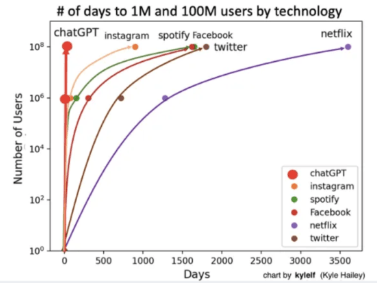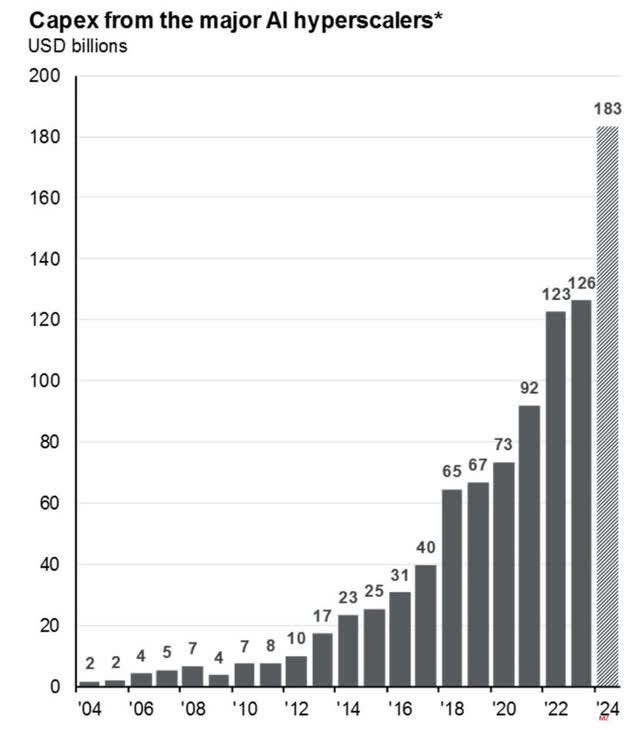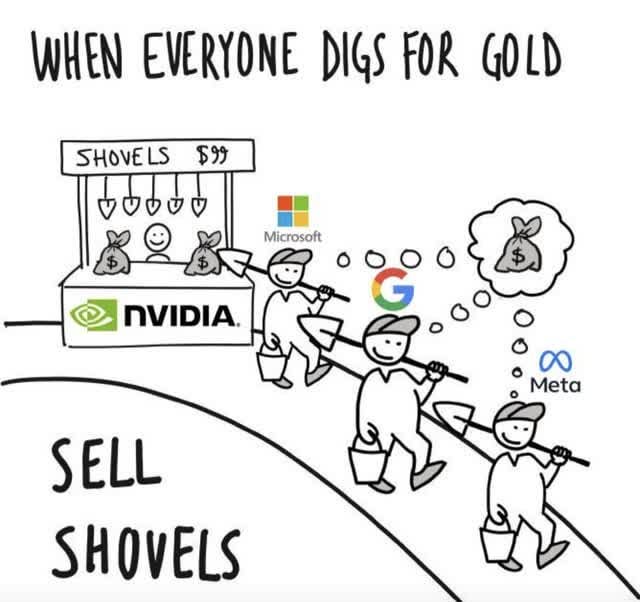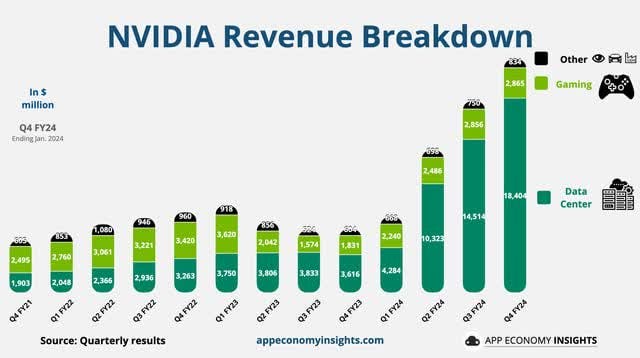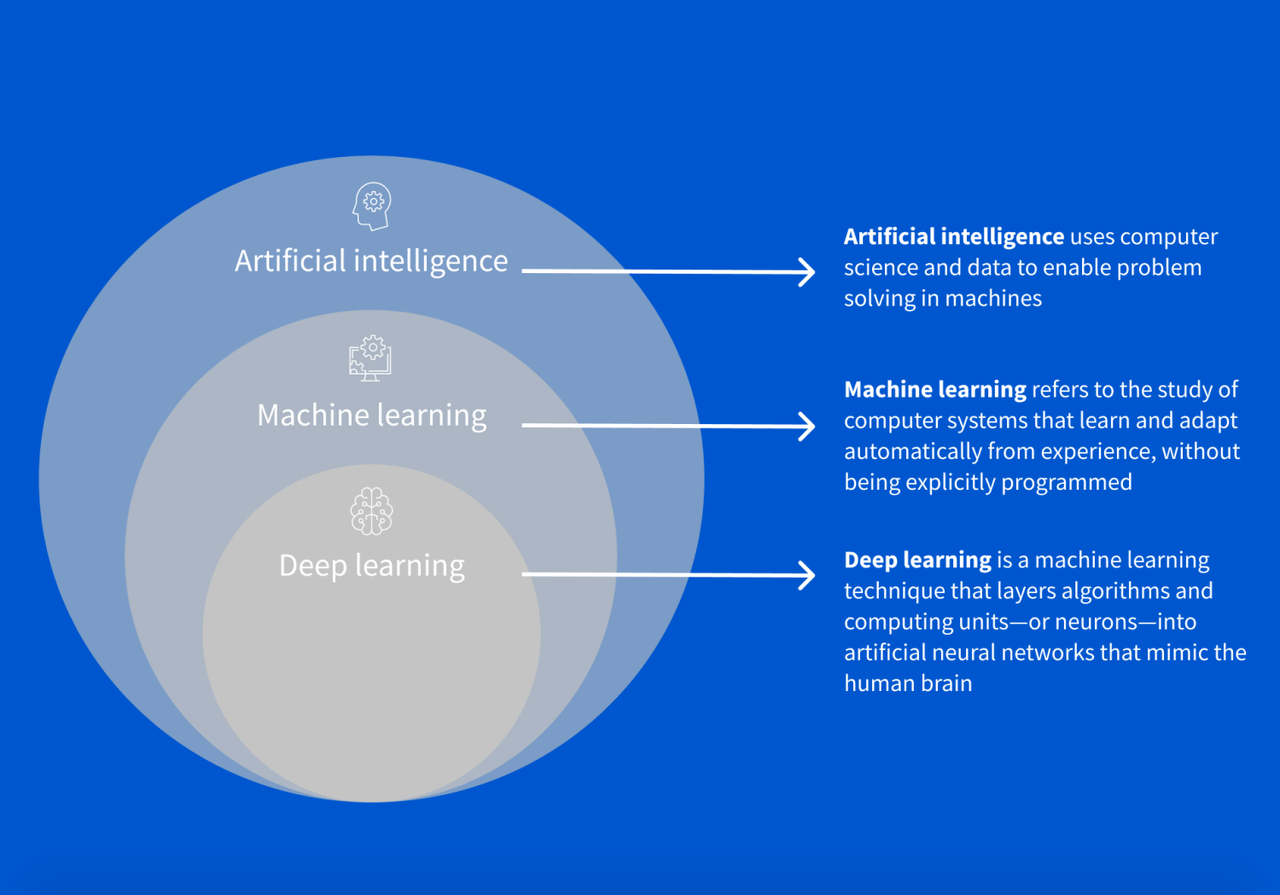The AI Deep Dive: Deconstructing The AI Value Chain (Part 1)
In part 1, I deconstruct the AI value chain and highlight the key players in each part of the AI value chain
I have spent many weeks and hours looking through industry reports, technical papers, company transcripts, surveys, interviews and talked to many company executives to get the insights that I will share in this artificial intelligence ("AI") deep dive report.
I have to say that I gained significant insights while preparing this and I hope you manage to get lots out of this report as well.
Before I begin, I think this sentence that Bill Gates wrote in 1996 is highly relevant for what we are seeing and where we are today.
We always overestimate the change that will occur in the next two years and underestimate the change that will occur in the next ten. Don’t let yourself be lulled into inaction.
What we are seeing today is not very much different from what Bill Gates saw then. The technological advancements we saw then was the start of the Internet age and today, we are witnessing the start of the AI age unfolding right before our eyes.
In my opinion, we are still very early in this AI wave, and while you may feel like you might have missed the boat on Nvidia NVDA 0.00%↑ , I think that there are many more such opportunities to come for those who understand what the opportunity even is.
And the crucial thing here is to understand what the opportunity will be for the next decade or more.
This is what this report is about.
Sneak peak into the different parts:
Part 1: Deconstructing the AI value chain
Part 2: The infrastructure layer (Semiconductors: GPU)
Part 3: The infrastructure layer (Semiconductors: Custom silicon and Networking)
Part 4: The infrastructure layer (Memory, Foundry, Thermal management and cooling, energy and grid)
Part 5: The infrastructure layer (Edge AI and cloud service providers)
Part 6: The infrastructure layer (Data platforms, tools and databases)
Part 7: The intelligence layer (Foundational models)
Part 8: The application layer (New AI applications and new AI features)
How did we get here?
To understand where we are today and where we are headed, we first need to understand how we got here in the first place.
November 30, 2022.
This was an important day.
This was the day that led to the watershed moment that triggered a new innovation cycle and the huge interest in AI we see today.
This was the day that ChatGPT was launched.
While the term AI dates back to 1955 when the word was first introduced by John McCarthy at Dartmouth College, the ChatGPT moment is the moment that brought about the broad adoption of AI.
As such, I see the day that ChatGPT was launched as a pivotal one and an inflection point for the broad adoption of AI, much like the Netscape browser was for the internet and Windows for the PC.
ChatGPT has made the term generative AI mainstream.
But more importantly, it also saw the fastest user adoption ever, attracting 100 million users in just two months after its launch.
This is clearly a big deal, as we can see the meteoric rise of ChatGPT in the chart below compared to popular applications today like Instagram, Facebook and Netflix.
Nothing else is quite like it. This growth was unprecedented.
For the first time in a long time, it felt like we are not only at the edge of technological advancement, but that there is strong mainstream adoption of this new technology.
Clearly, ChatGPT was the start of something great.
It was the catalyst.
NVIDIA
After ChatGPT brought in broad adoption of AI, Nvidia became the poster child for the AI boom.
Even today, Nvidia is still the poster child for the AI boom.
Why is this so?
With the meteoric rise of ChatGPT, big tech companies like Microsoft MSFT 0.00%↑ , Amazon AMZN 0.00%↑, Google GOOG 0.00%↑ and Meta Platforms META 0.00%↑ saw that this would create a huge opportunity.
Firstly, based on the strong and broad-based adoption of ChatGPT, they saw demand for generative AI products and started to focus on developing their own suite of generative AI products across the AI value chain.
Secondly, the three largest cloud service providers, Amazon's AWS, Microsoft's Azure and Google's Google Cloud Platform, saw the opportunity to provide their customers with the necessary AI compute and infrastructure for their customers to train and deploy generative AI models. These cloud service providers knew that they had to quickly capitalize on this opportunity, and that if they did not, they would be left behind.
What is the link to Nvidia?
As I will explain more in detail later, generative AI requires parallel processing, and Nvidia's AI GPU chips were a requirement in data centers looking to support AI training and inference demand.
This led to the hyperscalers loading up on Nvidia's AI GPU chips, resulting in unprecedented demand from the hyperscalers.
As such, the hyperscalers were in desperate need for Nvidia's GPUs, and they needed massive quantities of it, evident from the growth in their capital expenditures in 2024.
But then the question is: Are there no other players?
Nvidia had a monopoly in the data center GPU market.
In 2023, Nvidia made up 98% of the total data center GPU market share.
As a result of its monopolistic position in the data center GPU market, Nvidia's AI GPUs were the only shovels that were being sold as everyone was looking to dig for gold.
The result?
With an exponential growth in demand for AI GPUs for data centers, and a monopolistic position in the market, Nvidia saw a huge boom in its business.
In fact, business was so good that in 2023, 2024 and, so far, most of 2025, demand far outstripped supply, resulting in the perfect tailwind for the leader in data center GPUs, Nvidia.
This was the latest Nvidia data center revenue, which is many times larger than what it was just a few years ago as a result of this unprecedented growth in demand for Nvidia's AI GPUs.
While ChatGPT triggered the initial broad-based adoption of AI, Nvidia's AI GPU chips are the enabler for the exponential growth in AI training and inference demand.
While ChatGPT may be the catalyst and Nvidia may be the poster child of this early part of the AI wave we see today, the important point to note is that we are only at the very early beginnings of the AI age.
I am sure we will see big winners emerge in the coming years as we see growing deployment of AI technologies across different use cases.
In my opinion, there are two key categories of winners here:
Companies enabling this growth in AI technologies
Companies using these AI technologies to improve their business (either from the revenue perspective or cost perspective)
There will be big winners in both.
Before diving into specific companies for opportunities, it is important to first have a common understanding about the basic concepts of AI, its different levels, and what I call the "AI value chain".
Brief introduction to AI
To put it simply, AI is the technology that enables computers and machines to simulate human intelligence and problem-solving capabilities.
AI involves algorithms and models that can learn from the data and make classifications or predictions over time.
There are a few layers to AI, including artificial general intelligence, machine learning, deep learning.
What is artificial general intelligence?
This is often seen as the end goal, as artificial general intelligence means the creation of human-like intelligence which has the ability to self-teach and perform tasks that it may not have been trained for.
There is still a long way to go for this to be achieved of course, and today, it remains a theoretical concept. Most AI experts do not see the arrival of artificial general intelligence before 2045, but the optimist in Elon Musk claims it can be achieved in two years (I think highly unlikely, but we will see).
Companies like Meta and OpenAI, DeepMind, which is owned by Google, are some of the companies working towards this long-term goal of artificial general intelligence, and I am sure we will see more companies strive towards this cause as generative AI becomes mainstream.
What is machine learning?
Machine learning is a subset of artificial general intelligence.
Machine learning, as the name suggests, utilizes algorithms to find patterns from training data to make decisions.
When compared to deep learning, machine learning often involves smaller data sets, more human intervention to correct and learn, and typically has lower accuracy.
While both machine learning and deep learning are branches of the artificial intelligence umbrella, machine learning is a broader term which includes many techniques like deep learning.
In general, machine learning algorithm are usually trained on large amounts of labeled data while deep learning algorithms are trained using large amounts of unlabeled data.
For example, when you listen to a song on Spotify, the application uses machine learning algorithms to understand your preferences when you listen a song to the end, which will help to provide you with suggestions about songs you may like.
What is deep learning?
This is the discipline that focuses on training neural networks with multiple layers to train models to understand complex relationships with raw data.
Deep learning is a subset of machine learning.
Deep learning can be used in many different applications, including natural language processing, image recognition, text to image, for example.
Deep learning models are used to run the Google Translate app, by converting texts to images, and within natural language processing, they are also used for chatbots, which we are familiar with today.
What is generative AI?
Generative AI is basically the deep-learning models that takes in massive amounts of raw data to generate high quality outputs when promoted.
These raw data can be in any form, like from Wikipedia, or in image form.
Generative AI is powered by foundation models or large AI models, that can multi-task and perform out-of-the-box tasks like summary, answering of questions, classification and more, and it first requires training.
These generative AI models are first trained using training data, and thereafter, these models are used to produce output based on the data that they are trained on, and the output can be in text, images, audio, or other forms.
ChatGPT is a popular generative AI model, and the version of the AI-powered chatbot that took the world by storm in November 2022 was built on based on GPT-3.5. In March of 2023, GPT-4 was released, and in May of 2024, GPT-4o was launched.
What are the use cases of generative AI models?
In essence, generative AI models can use inputs like text, image, audio, video, and code and generate new content into any of the modalities mentioned.
For example, it can turn text inputs into an image, turn an image into a song, or turn video into text.
An example for audio would be that models are developed to create songs or custom music using text inputs, while images are on of the most popular applications of generative AI today as generative AI models can generate, enhance or modify images based on certain text inputs.
Of course, the most common generative AI use case today is in text as many language-based generative models are trained for things like code development, translation and using as a chatbot.
Steps to create AI applications
Before I go into the AI value chain, I think it is first important to understand the steps to take to develop AI applications.
Step 1 is data preparation, which includes:
Data ingestion
Data is collected to train and test the model.
It is important to note here that training data can come in different formats, including images, voice, text and more.
Data cleaning
Raw training data may include noisy data, inconsistent data and missing data, which needs to be pre-processed.
Data labeling
Training data is labelled by adding annotations for supervised machine learning.
Feature Engineering and Split Data
Datasets are manipulated to create parameters to improve the prediction accuracy of the model.
Data is split into a training set and testing set for cross validation.
Step 2 is model training and development, which includes
Developing and training of models by fitting each model to train on the dataset from Step 1.
Tuning the hyperparameters.
Accessing of model performance by calculating performance metrics (accuracy, precision) using the testing data.
Step 3 is the deployment of the model, which includes
Deployment through embedding the model in AI applications.
Monitoring of the model performance by performing regular testing.
Continuously improve and iterate the model after deployment to improve performance.
With the brief introduction to AI complete, let us now look at how I would categorize the AI value chain.
AI value chain
After spending months researching on this topic, I started to see the AI opportunity in terms of the AI value chain.
Depending on where the company is in the AI value chain, it may see benefits today, one year from now, or even five years from now.
The AI value chain helps to provide some context about where each player contributes, where largest value creation is, and provides a better idea about the long-term investment opportunity.
I think of the AI value chain as having 3 main layers (I will provide an overview of each layer and elaborate more about them later).
A company can operate in just one layer, or in one or more layers.


